IVF Related Procedures
Cryopreservation
1- Cryopreservation or embryo Freezing:-
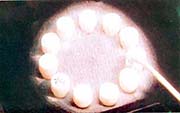 In this method, the excess embryos derived from an IVF cycle, will be preserved at sub-zero temperatures at an embryo stage ranging from fertilized oocytes to blastocyst stage using special techniques These embryos are used for future embryo transfer, without the need for ovarian stimulation or pickup procedure again. Those frozen embryos can be stored for many years and can still result in healthy children.
In this method, the excess embryos derived from an IVF cycle, will be preserved at sub-zero temperatures at an embryo stage ranging from fertilized oocytes to blastocyst stage using special techniques These embryos are used for future embryo transfer, without the need for ovarian stimulation or pickup procedure again. Those frozen embryos can be stored for many years and can still result in healthy children.
The success rate of this method depends on the stage of the embryo, and the freezing highest success rate (80%) is reached when the embryo is frozen at the Pronuclear stage and the Blastocyst stage. There is no difference in the pregnancy rate and no increase in chances of having abnormal child when comparing between using frozen embryos or fresh embryos.
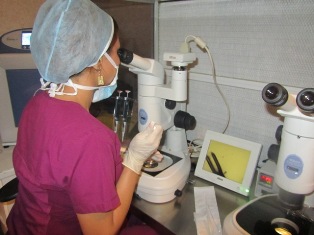
Embryo cryopreservation procedure
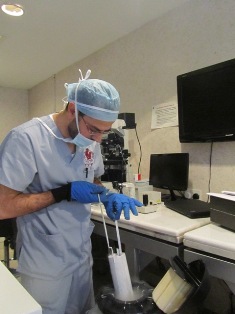
Storing the frozen semen in a specialized liquid N2 storage tanks
2- Oocyte Cryo-preservation :-
Oocyte preservation can be done in many ways:
- Cryopreservation of whole or fragment of ovarian tissue.
- Cryopreservation of immature oocytes.
- Cryopreservation of mature oocytes.
3- Freezing seminal fluid and testicular tissue:
This is done for the following cases:
- Men who have problems giving a sample when needed on egg retrieval day.
- When the man has no sperm in his seminal fluid and the sperm has to be obtained from the testes. The sperms or testicular tissue can be frozen to be used at a later date.
- Men whose sperm are decreasing in number or motility, or both.
- Men who have testicular disease and may require surgical removal of the testes.
- Men who have cancer and will need chemotherapy or radiotherapy or both.
The total number of cases that become pregnant by the previous methods is equal to the number of cases that become pregnant spontaneously. However, some factors should be taken into consideration, such as the woman's age and the quality of the man's seminal fluid.
Ovarian hyper stimulation syndrome - OHSS:
This happens as a result of taking fertility drugs. The ovaries become painful and swollen, and it is divided into mild, moderate and severe forms. One fourth of women who take fertility drugs develop mild OHSS. It usually resolves after one week, however, it might last for several weeks if a pregnancy occurs. Some women who are taking fertility drugs might develop more severe forms of OHSS.
Symptoms of Ovarian hyper stimulation syndrome:
| - Mild OHSS: | - Moderate OHSS: | - Severe OHSS: | - Critical OHSS: |
| • Feeling fullness. • Abdominal bloating. • Nausea. • Diarrhea. • Slight weight gain. • The ovaries are enlarged (5-12 cm). • Mild ascites. |
• Excessive weight gain (more than 2 pounds per day). • Vomiting. • Diarrhea. • Darker urine and less in amount. • Excessive thirst. • Dryness of skin and hair. |
• Fullness above the waist. • Shortness of breath and respiratory distress. • Pleural effusion. • Darker urination, less in amount. • Chest pain. • Marked abdominal distension and pain. • Hemoconcentration, (hematocrit > 45). • Thrombosis. • WBC >15,000 • Creatinine 1.0-1.5 mg/dl. • Creatinine clearance >50 ml/min. • Liver dysfunction. |
• Enlarged ovaries. • Tense ascites. • Hydrothorax. • Hematocrit > 55%. • WBC>25,000. • Oligoanuria. • Creatinine > 1.6 mg/dl. • Creatinine clearance < 50 ml. • Renal failure. • Thromboembolic phenomena. • ARDS. |
Complication of Ovarian hyper stimulation syndrome - OHSS
- Ovarian torsion.
- Ovarian rupture.
- Thrombophlebitis.
- Renal insufficiency.
- Note:
Pathophysiology of Ovarian hyper stimulation syndrome:
- HCG extensive lutenization of the ovary large amounts of estrogen, progesterone, and local cytokines will be released vascular endothelial growth factor (VEGF) vascular hyperpermeability fluid shift from intravascular system to abdominal and pleural cavity
- If there are too many follicles, the VEGF will be released in large amounts and will lead to accumulation of fluid in the third space, in the form of ascites that may lead to hypovolemia and to an increased risk of respiratory and renal problems and thromboembolism.
- It can be avoided by using GnRH agonist instead of HCG.
Risk factors which increase incidence of Ovarian hyper stimulation syndrome:
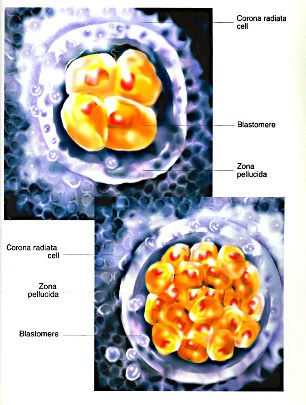
- Polycystic ovary syndrome
- Young age
- Previous OHSS
- Becoming pregnant with more than one baby
- Low body weight
- Large number of follicles
- High level of estradiol before HCG shot
- Migraine headache
Treatment of Ovarian hyper stimulation syndrome:
Treatment of Mild OHSS:
It needs only conservative treatment with monitoring of abdominal girth, discomfort and weight, in an outpatient clinic.
Treatment of Moderate OHSS:
It's treated by:
- Bed rest
- Fluid
- Monitoring of electrolytes and blood counts
- Ultrasound monitoring
- Monitoring of fluid intake and output on outpatient basis (over 1L discrepancy is cause of concern)
- Fluid aspiration may be necessary.
- Opioids may be needed for the pain
- Note:
Sex Selection
Assisted Hatching
Finally: 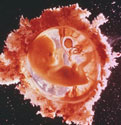
In the treatment of infertility, there are no guarantees. But what we can guarantee, is our care for you and the special treatment we give you, in the confidential and caring way in which we deal with all your problems.
We are here for you, so do not hesitate to ask whatever you may wish to know, realizing that your success is our success.
God be with you.
Dr Najeeb Layyous F.R.C.O.G
Consultant Obstetrician, Gynecologist and Infertility Specialist







 Pregnancy Due Date Calculator
Pregnancy Due Date Calculator
 Chinese Gender Predictor
Chinese Gender Predictor
 Ovulation Calculator
Ovulation Calculator
 IVF Due Date Calculator
IVF Due Date Calculator
